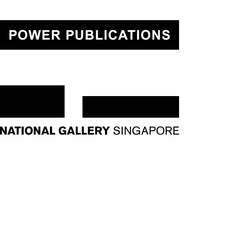
Ambitious Alignments: New Histories of Southeast Asian Art, 1945–1990
$39.99
Edited by
Stephen H. Whiteman
Sarena Abdullah
Yvonne Low
Phoebe Scott
Published by
Power Publications
National Gallery Singapore
Runner-up in the 2019 AAANZ Best Anthology Prize
How does one define the art of a region without losing sight of cultural specificity? This question has often plagued art historical studies of the “global,” but this exceptional collaborative research effort, conceived through archival research, extensive fieldwork and new theoretical perspectives, succeeds where others have failed: in presenting transnational perspectives on post-war artistic practices and the processes of de-colonisation in Southeast Asia without losing sight of national singularities.
—Nora A. Taylor, Alsdorf Professor of South and Southeast Asian Art, School of the Art Institute of Chicago
These are gritty, painstaking, revealing studies of topics that are infrequently represented in research into art and its histories. When regarded collectively in this volume, the new in fields of Southeast Asian art is not only promised but inaugurated significantly.
—T K Sabapathy, National University of Singapore
ISBN 978-0-909952-92-1
356 pages
100 colour illustrations
248 x 172 mm
970 gms
This new volume, co-published by Power Publications and National Gallery Singapore, explores the art and architecture of Southeast Asia in the postwar period. Ten essays by emerging scholars draw upon unexplored archives and works of art, bearing witness to rich local histories and uncovering complex artistic exchanges across Cambodia, Indonesia, Hong Kong, Myanmar, the Philippines, Singapore, Thailand and beyond.
The collection sheds new light on the significance of architecture, painting, installation, photography, and sculpture in the historical narratives of this period and offers fresh insights into artistic production and reception within the cultural and political contexts of postcolonialism and the Cold War, the legacies of which continue to shape the region today.
• Histories of art, architecture, monuments and exhibitions based on new fieldwork and archival research
• Research from Thailand, Myanmar, Hong Kong, Singapore, Indonesia, Cambodia and the Philippines
• More than 100 colour images
This book will appeal to readers interested in intersections of art history and the histories of modernism, postcolonialism, and the Cold War; the disciplines of architecture, photography, installation; and the histories and cultures of Southeast Asia.
Ambitious Alignments holds up to its title, presenting a diversity of methodologies and specialised topics that attempt to decolonise the field.
—Ian Tee, reviewed in Art and Market
... the volume is not only a necessary read for scholars of visual culture, art history, Buddhist art, history of photography, and Southeast Asian studies in general, but also an inspiration and starting point for future research studies.
—Reaksmey Yean, reviewed in Arts Equator
Ambitious Alignments is a major contribution to the field and points the way towards both a fruitful method of collaborative research that brings overlapping histories together and to new areas in which such research can be focussed. It should be an essential text for students and art historians.
—Caroline Turner, reviewed in Southeast of Now: Directions in Contemporary and Modern Art in Asia
One of the most impressive aspects of Ambitious Alignments is its examination of how Southeast Asia frequently navigated, with real agency, the complex Cold War politics shadowing the region’s postcolonial development.
—Gregory Galligan, reviewed in Art in America
The book’s strength lies not only in its archival lens, but in that it does not attempt to broadly generalize “Southeast Asian art” during 1945–1990. Rather, each author investigates in depth one person, topic, or event. This allows for specific issues to be explored from a fresh, focused lens ... Ultimately the book attempts to remove the western lens from Southeast Asian art. Each author attempts to separate themselves from what they have been taught through traditional Eurocentric education. Too often, parts of history are written over by hegemonic powers. Stories are left unread and undiscovered, creating a single narrative, often unrepresentative of large swaths of the world. This collection of essays seeks to share these overlooked stories.
—Esha Jain, reviewed in IVAA
Contents
Introduction
Aligning New Histories of Southeast Asian Art
by Phoebe Scott, Yvonne Low, Sarena Abdullah, and Stephen H Whiteman
Part 1: Art for the Nation
‘The Work the Nation Depends On’: Landscapes and Women in the Paintings of Nhek Dim
by Roger Nelson
Strategic Modernism: The Architecture of HSH Prince Vodhyakara Varavarn and Modern Thailand in Transition, 1950s–1960s
by Chomchon Fusinpaiboon
Part 2: Circulation and Internationalism
The Politics of Friendship: Modern Art in Indonesia’s Cultural Diplomacy, 1950–65
by Brigitta Isabella
Circulating Abstraction: Exhibiting Hong Kong in Manila, 1961–82
by Michelle Wong
Part 3: Contested Topographies
Place of Learning: The Contested Cultural Topographies of Nanyang University and The Chinese University of Hong Kong
by Simon S Y Soon
Re-Establishing the Kingdom: Anti-Communist Monuments in the Thai Highlands
by Thanavi Chotpradit
Part 4: Trauma and Affect
Aesthetics of Silence: Exploring Trauma and Indonesian Paintings After 1965
by Wulan Dirgantoro
Embodied Subjectivities: Accounts of Affect in Lani Maestro’s Site-Specific Work, 1970s–1990s
by Eileen Legaspi-Ramirez
Part 5: Defining ‘Art’ in Southeast Asia
Beyond Reality: Locating the Sur-Real in Thai Photography
by Clare Veal
Painting Through the Cheroot Haze: Censorship of Female Artists in Socialist Burma, 1962–88
by Melissa Carlson





Published by





